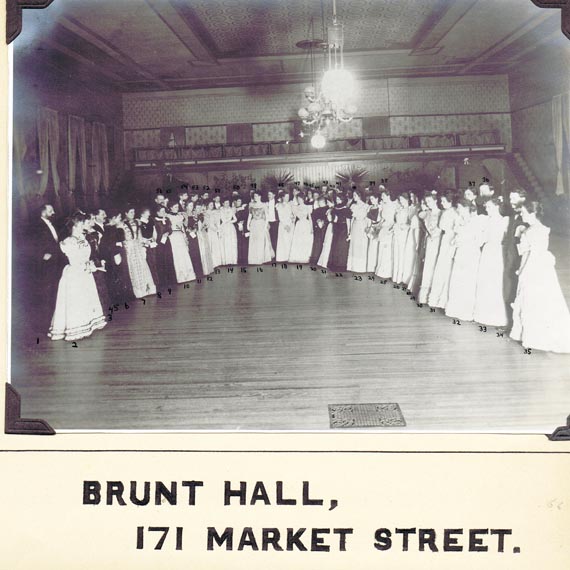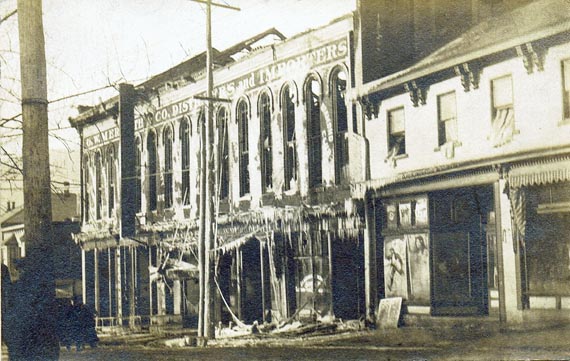Some Foundation Material
What is the grandest building you can imagine? Have you ever seen an opera house? Between the years 1850 and 1915 small and large towns across Iowa built at least one opera house for residents to celebrate together and enjoy various performances. In fact, towns could not really call themselves “civilized” without an opera house.
England had many theaters built during the years of Shakespeare in the late 1500's and early 1600's. Some people objected to plays in theaters. They viewed this type of entertainment as immoral or dangerous for young minds. But music didn't seem quite so bad. And opera seemed even more respectable.
So the phrase “opera house” became standard in the Midwest during the late 1800's to describe any structure that housed some type of entertainment, whether it was plays or musicals. Although the term “opera” house was used, operas were not the form of entertainment performed . . . ”
http://www.iptv.org/iowapathways/mypath.cfm?ounid=ob_000090
Also
http://www.historicoperahouses.org/
In East Liverpool from 1881 to early 1900's there were several such buildings built.
Here is a list of the opera houses built during that time period. The oldest first:
Bradshaw Hall (Prior to 1855) on Broadway.
Davidson Opera House, 1881-82 on 2nd Street. Never completed.
The McNicol Opera House, on Market Street between Third and Fourth Streets, opened in 1881. In succeeding years was also known as the East Liverpool Opera House and the Brunt Opera House.
Grand Opera House 1893. 6th Street.
Ceramic Theater 1904, 4th Street.
Bradshaw Hall
Methodists organized in East Liverpool in 1855. They met in Bradshaw Hall until 1857 when they purchased the Sons of Temperance Hall on Fifth Street to use as a church.
The Bradshaw Hall (Meeting House) and Theater. This building was used as a meeting place by the Congregation of the Christian Church after the fire. It was located across the Street from Brunt home. The date in the picture would be the date the building was built, not the actual date of the picture. A Standard Oil service station replaced this building in the 1890's. It was replaced by the Cooper Insurance Company building in the late 1900's.
East Liverpool citizens first demonstrated their collective support for high protective tariffs in 1878 at a rally in Pittsburgh. Prior to the demonstration, the editor of the Potter's Gazette made it quite clear that "Every resident of this place has a direct interest in this matter. A reduction in tariff rates at this time means lower prices for our wares, and lower prices for our wares means lower wages to our labor. Every storekeeper, merchant, doctor, preacher, lawyer, real estate owner - all who have a stake in the business interests of our town, should help the manufacturers and workingmen to oppose any present change in the existing tariff. . Crowds packed Bradshaw Hall for a public meeting and a series of speeches by George Morley, Josiah Thompson, and other pottery manufacturers.
On 9 January 1877 Trenton potters struck in reaction to a twenty percent reduction in wages. East Liverpool potters, who had been meeting in Bradshaw Hall since August of the preceding year, formed the "Potter's or Workingman's Protective Association." . . In March a ball was held at Bradshaw Hall for the benefit of the potters in Trenton.
General Lyon Post number forty-four of the Grand Army of the Republic (GAR), founded in East Liverpool in January 1881, provided aging veterans an opportunity to relive more "glorious" days with former comrades in arms. The local GAR raised over seventeen thousand dollars to construct a memorial chapel in Riverview Cemetery through a festival at Bradshaw Hall and private subscriptions.
During the 1870's and 1880's East Liverpool was filled, on numerous occasions, with the sound of music. A concert was held at Bradshaw Hall in 1869 by the Liverpool School of Vocal Music featuring twenty musical renditions by various singing groups. In 1872 the East Liverpool Union School presented music by duets, a chorus, and piano solos that delighted all of those in attendance.
Davidson Opera House
http://www.eastliverpoolhistoricalsociety.org/davidopera.htm
Grand Opera House 1893. 6th Street.
http://www.eastliverpoolhistoricalsociety.org/grandoperahouse.htm
The McNicol Opera House, AKA East Liverpool Opera House AKA Brunt Opera House.
The McNicol Opera House, on Market Street between Third and Fourth Streets, opened to the public in 1881. The three-story brick structure had a seating capacity for eight hundred patrons. In succeeding years, under the names of the East Liverpool Opera House and the Brunt Opera House, the "elegant" house delighted local patrons with a variety of presentations. On 31 October the "best show of the season ... 6 Peas in a Pod' was presented by Rentfrow's Jolly Pathfinders, accompanied by music featuring the Silver Coronet Band and an Operatic Orchestra. During the 1886 season, stars such as Mattie Vickers, Lilly Clay, and Cora Van Tassell appeared in East Liverpool in such plays as Skipped by the Light of the Moon, the "comedy sensation of modern times." In 1886 when a second entertainment hall opened in the town, the editor of the Review, perhaps a little excited, announced that, "East Liverpool is fast assuming metropolitan proportions." When the new Mozart Hall on Sixth Street opened to a "packed house," the editor was in attendance. He thought the presentation was "varied and highly amusing entertainment, at the same time moral in its tendencies, being entirely free from the vulgarity, low slang and sensationalism so often found in the popular amusements of the day."68

A ball given by Mr. and Mrs. William T. Tebbutt, in Brunt Hall about 1898-99.
Street numbers for east wet streets were different prior to 1900 than they were after 1900. It appears that may be the case with north south streets as well. Under the current street numbering system 171 should be between First Street and Second Street.
In 1958 The Betz Apartments, in the Betz Building was 317 Market St. That would fit the current street numbering system which made the area between 3rd St and 4th Street the 300 block of the downtown north south streets.
The 1898-99 East Liverpool and Salem Directory supports my theory:
Brunt Hall, 171-179 Market.
Brunt Hall was the Brunt Opera House and as the picture from the 1897 Sanford Fire Insurance maps shows it was not between 1st and 2nd street but rather between 3rd anf 4th street. Thus the numbering system was different back then for north south streets too.
Brunt Opera House was at the far right on the western side of Market Street on the above map.

George W. Meredith, one of the leading business men of East Liverpool, distiller, jobber and importer of wine and liquors located his business in what was once the Brunt Opera House, now called the Betz Building where it flourished until 1908 when he moved that business to Pittsburgh, Pa. He was protesting the city voting to go "dry".
Brunt Hall, built about 1880 and demolished in 1918, succeeded Bradshaw Hall, Broadway, as the theater and dance Hall of East Liverpool. About half its time it was a theater, playing uncle Tom's cabin at least twice every season. The leading clubs of the city held their dances here..
Ceramic Theater 1904, 4th Street.
http://www.eastliverpoolhistoricalsociety.org/certhtre.html
RETURN TO AUDITORIUMS
This site is the property of the East Liverpool Historical Society.
Regular linking, i.e. providing the URL of the East Liverpool Historical Society web site for viewers to click on and be taken to the East Liverpool Historical Society entry portal or to any specific article on the website is legally permitted.
Hyperlinking, or as it is also called framing, without permission is not permitted.
Legally speaking framing is still in a murky area of the law though there have been court cases in which framing has been seen as violation of copyright law. Many cases that were taken to court ended up settling out-of-court with the one doing the framing agreeing to cease framing and to just use a regular link to the other site.
The East Liverpool Historical Society pays fees to keep their site online. A person framing the Society site is effectively presenting the entire East Liverpool Historical Society web site as his own site and doing it at no cost to himself, i.e. stealing the site.
The East Liverpool Historical Society reserves the right to charge such an individual a fee for the use of the Society’s material.